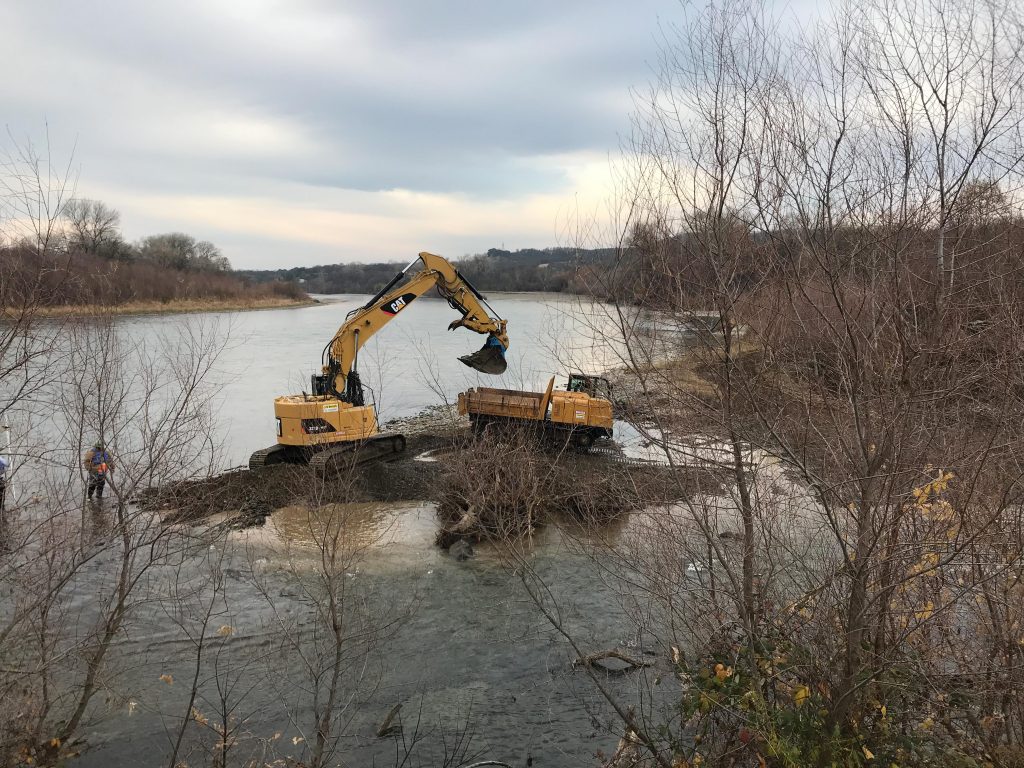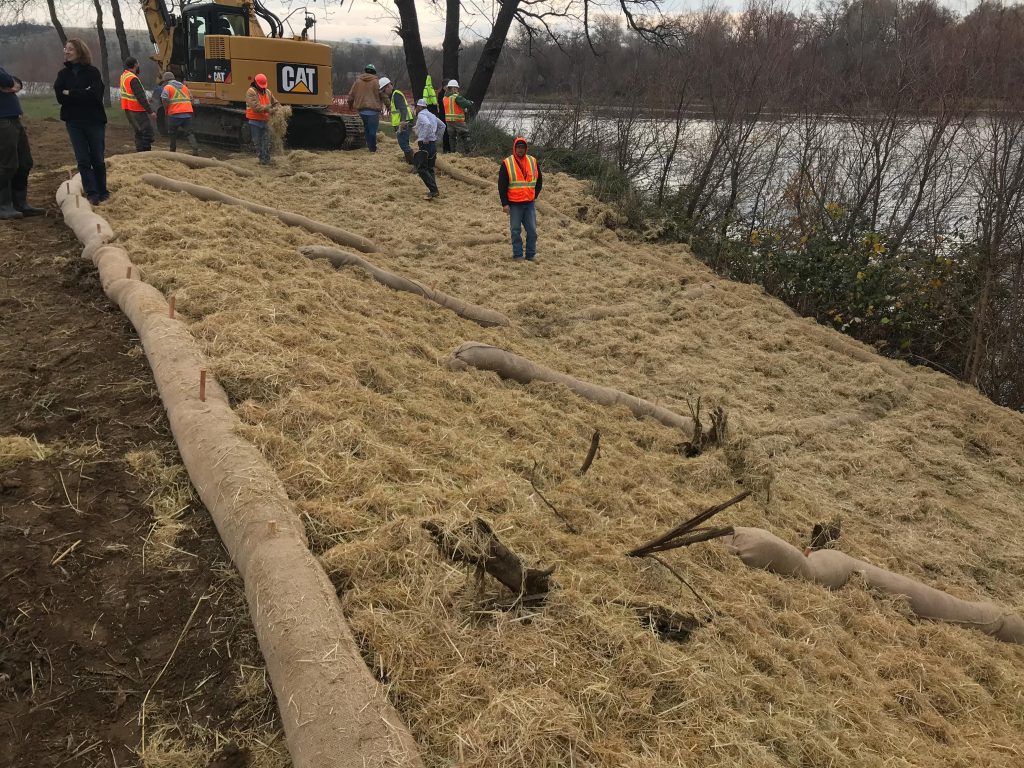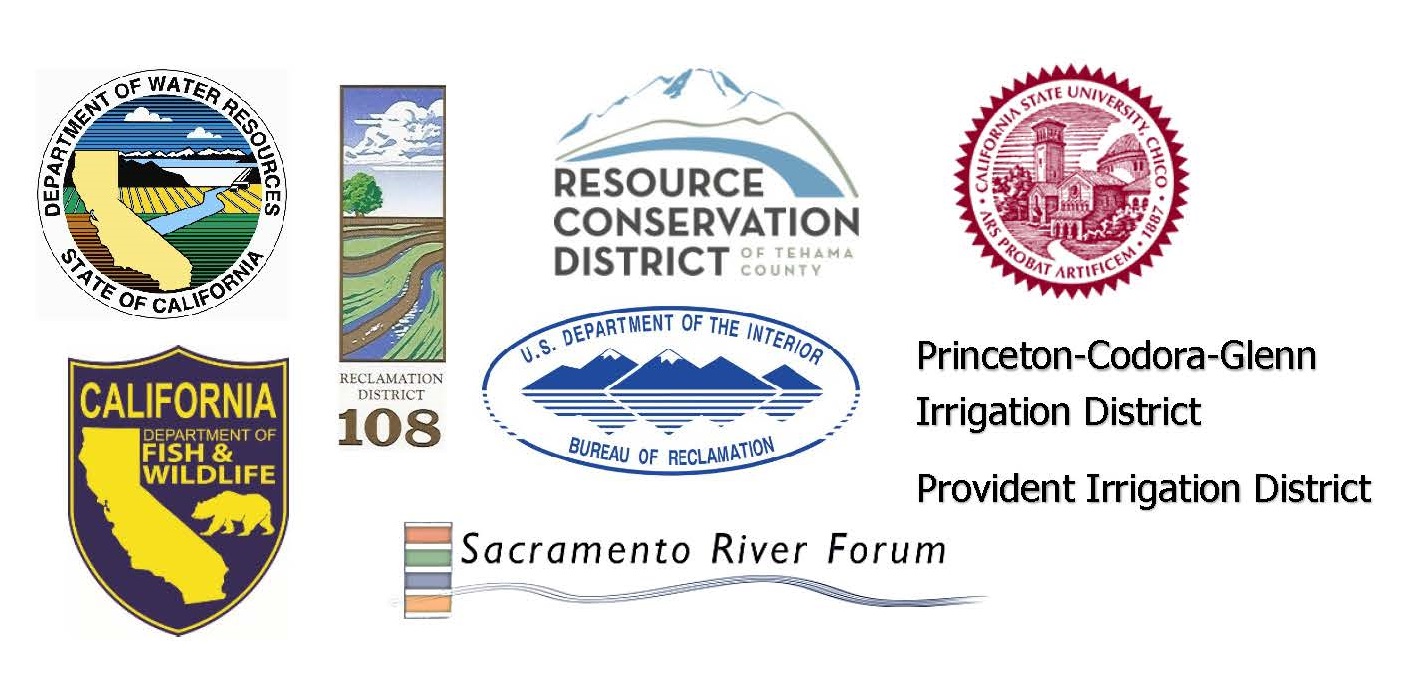New Salmon Habitat Project Completed on Sacramento River
14th Project Completed to Benefit Salmon in the Sacramento Valley
COTTONWOOD – A Sacramento River side channel in Tehama County has been restored to improve salmon rearing habitat on the Sacramento River. The project is the result of a collaborative partnership of state and federal agencies, local water districts, and conservation groups, and marks the 14th project completed over the last two years to benefit salmon in the Sacramento Valley. Construction at the project site, which is located just south of the gated Lake California community between river mile 269 and 270, has been completed but monitoring of the site will be ongoing.

“As the project’s construction manager, we are pleased with the partnership effort to improve this natural resource for salmonid species and water users. It is great to have such a meaningful project take place in our backyard with a positive local and downstream impact,” said Vicky Dawley, Resource Conservation District of Tehama County.
The purpose of the Lake California Side Channel Restoration Project was to create a functional side channel at lower flows to provide additional rearing habitat for winter-run juvenile salmonids, as well as other species. Currently, adult winter-run Chinook migrate upstream and spawn during the summer. Fry emergence occurs during fall, when typically flows in the Sacramento River are reduced significantly at the end of the irrigation season, which can cause stranding issues as well as reducing prime rearing habitat for juveniles.
“This is a great example of the innovative and collaborative projects being carried out throughout the Sacramento Valley right now to address all stages of the fish life cycle, helping to improve their chances of survival,” said Jane Dolan, Sacramento River Forum. “While each project executed provides independent value, the comprehensive implementation through these creative partnerships help advance salmon recovery in the Sacramento River Basin.”
“Sacramento Valley water suppliers are committed to the development of projects that will ultimately help us manage water resources in a way that satisfies the co-equal goals of water supply reliability and ecosystem benefits,” added Lewis Bair, General Manager for Reclamation District 108.

The Lake California Side Channel Project was completed to remove accumulated gravel at the inlet and reconnect the existing side channel to the River during the low flows of late fall and early winter. The gravel accumulation had also led to impacts downstream, including sediment accumulation, increased predator habitat and decreased dissolved oxygen. These changes decreased the aquatic habitat function for winter run juveniles. By excavating the inlet of the side channel, flow volume and velocity were restored during this critical period for winter run juveniles, increasing the rearing function of the downstream portion of the side channel at low flows.
Project partners excavated and dredged the accumulated gravel from the side channel; relocated excavated gravel; installed temporary culverts; and constructed a temporary stream crossing for channel access. The crews excavated approximately 2,000 cubic yards of gravel in approximately a 0.80-acre area in the channel. The relocated gravel will be reintroduced to the river during high flow in the Sacramento River.
This project is part of a continuing program developed and implemented by the Department of the Interior (DOI) as part of the Central Valley Project Improvement Act (CVPIA). The programs purpose is to restore and replenish, as needed, salmonid spawning gravel lost due to the construction and operation of the Central Valley Project dams and other actions that have reduced the availability of spawning gravel and rearing habitat in the Sacramento River from Keswick Dam to Red Bluff Diversion Dam.
Project Partners include: U.S Bureau of Reclamation; Chico State University; CSU Chico Geographical Information Center; California Department of Water Resources; California Department of Fish and Wildlife; The Sacramento River Forum; The Resource Conservation District of Tehama County; Reclamation District 108; Provident Irrigation District; Princeton-Cordora-Glenn Irrigation District; Steve Tussing Ecological Services; Pacific States Marine Fisheries Commission; and Tehama Environmental Solutions.

For more information on the project, click HERE.
For more information on Sacramento Valley salmon recovery efforts, click HERE.



